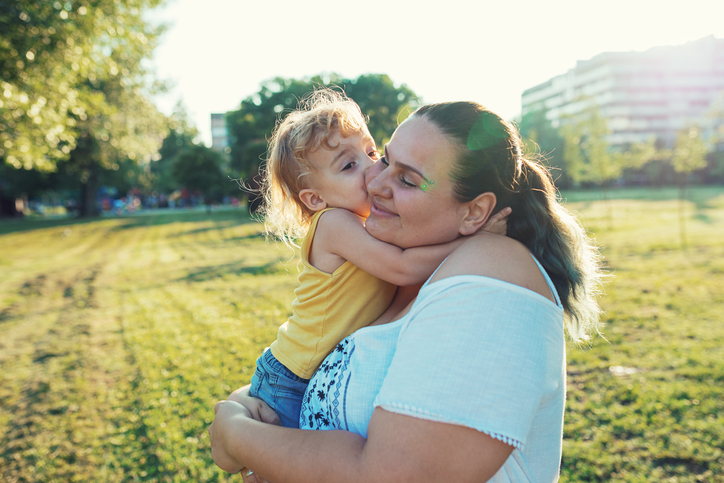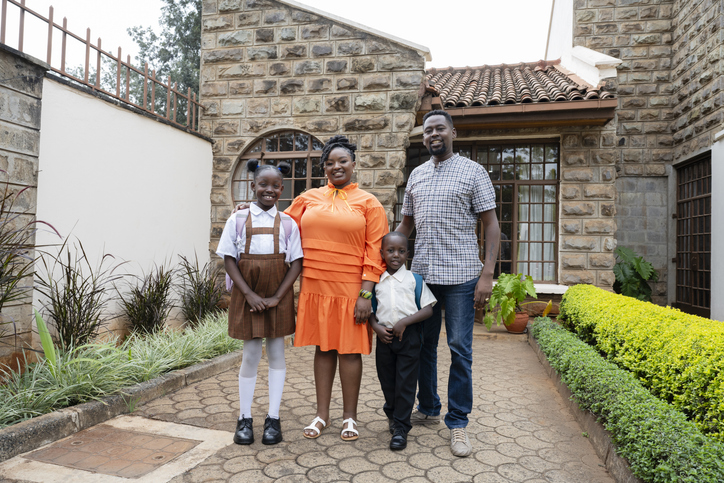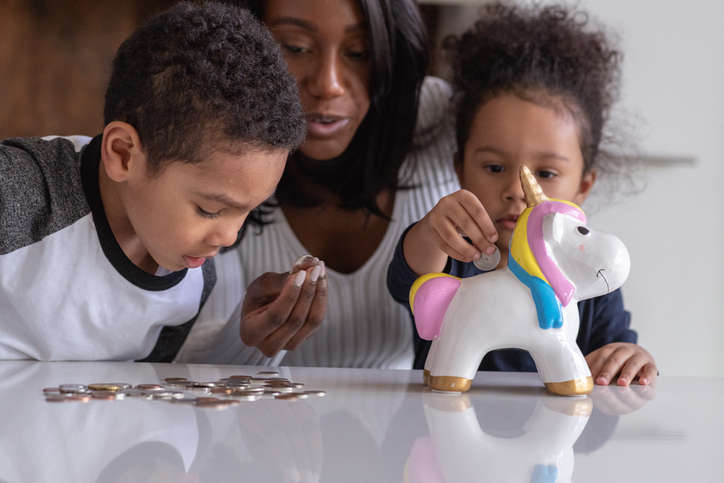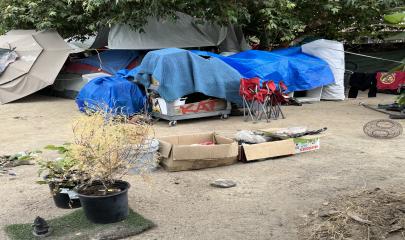Lump Sum or Recurring: Can Cash Transfers Break the Cycles of Poverty?


The question of how to empower, dignify, and uplift families living in poverty has challenged societies since at least the 16th century. Two approaches to supplementing household incomes and disrupting cycles of poverty have emerged from this now-centuries-old conversation: provide a household with either a recurring monthly payment or an asset in the form of a lump sum payment of cash. Monthly income supplements might ensure that households can meet their household expenses, while larger lump sum payments can be used to make investments in education or businesses. Such investments might allow a household to generate more income, providing a boost to economic mobility. While both approaches have had their adherents, recent programs and studies are producing evidence on the impacts of monthly guaranteed incomes and lump sum payments, enabling us to consider how best to adopt these approaches as standing policies that can help people in need.
Savings Seem to Promote Economic Mobility
A 30-year body of research has now amassed evidence that savings—similar to one-time lump sum payments, also known as assets—improve household well-being and can set in motion economic mobility. A related series of experiments in the 2000s and 2010si looked at what happens when families in poverty receive or build an asset, such as a savings account. The research is promising. It suggests, for example, that a one-time $1,000 investment for college savings makes a difference in outcomes in school performance for children in the household—for example they have stronger math skills, better academic expectations and fewer behavioral problems—encouraging stepsii on the path to more social and economic mobility. The Earned Income Tax Credit, a refundable tax credit, consistently shows across 25 years of research that a lump sum payment once a year improves well-being across a range of outcomes, including measures of school performance and the health of children in the household.iii The Alaska Permanent Fund, another annual lump sum payment, shows consistent improvements in some household measures of well-being, including the birthweight of babies, reduced obesity in children, and reductions in poverty.iv
Regular Monthly Payments Promise to Alleviate Scarcity
With the advent of the pandemic and emergency cash assistance to families in crisis, researchers and policy makers have a renewed focus on determining if regular cash payments disrupt cycles of poverty in the United States. To address the additional financial challenges presented by the COVID pandemic, policy makers at the federal, state, and municipal level have experimented with a basic or guaranteed regular monthly income for families living in poverty to meet basic needs not covered by the existing social safety net. The large-scale monthly child tax credit experiment—a form of a guaranteed basic income—suggests that monthly cash payments markedly reduce child poverty rates while in place.v Upwards of 100 pilots across the United States have been launched since the start of the pandemic to explore the outcomes for households that receive monthly payments. While most of these pilots have yet to report results, preliminary findings for some studies looking in more depth at a variety of household outcomes, suggest improvements in food security and quality (Chelsea Eats),vi housing outcomes (Denver Basic Income), mental health and other physical measures of well-being (Stockton).vii The positive benefits seem to accrue while the household receives the cash transfer—some of the benefits do not last once the payments stop.viii Starting in 2024, the expected release of impact study results will provide a clearer sense of the outcomes from this large number of pilots.
Can Monthly Payments Create Economic Mobility?


While cash may be able to temporarily lift people out of survival mode or keep them afloat during a crisis , one unanswered question is whether such policy investments can kick-start longer-term progress into financial well-being that can be sustained after the program ends. From a policy perspective, improvements in economic mobility would offer potential for the greatest return on investment and represent arguably the wisest stewardship of public dollars. However, the results coming in from pilots suggest that adult members of households are not seeing some of the benefits of cash payments sustained six months after the end of the pilot. Long-term research will be needed to better understand the economic mobility implications of the monthly cash payment pilots for both adults and children in the households. For example, if children perform better in school while receiving the cash, this would be an important indicator that the policy could stimulate inter-generational economic mobility.
Upfront Cash vs. Monthly Payments in Kenya


Until recently, no study had directly compared these two approaches to providing social supports. However, on the international stage, GiveDirectly’s innovative universal basic income experiment in Kenya provides new insights into the question of whether a lump sum or short- or long-term monthly income produces the most impact. The experiment tested three different interventions— monthly short-term cash payment (2 years), long-term monthly cash payment (12 years), and a one-time investment of the equivalent cash. The interim findings two years into the intervention suggest that the lump sum allowed families to make investments that generated more income thereafter, while the long-term monthly payments still allowed families to make multiple smaller investment, notably investing in community lending circles, which could generate ongoing access to credit for investment purposes.ix The long-term monthly payments seem to have improved mental health outcomes the most of all three interventions. The short-term (2 year) monthly payments had the least impact of the three interventions.
Upfront Cash and Monthly Payments in the U.S.


While the results from Kenya are promising, understanding the US context is important when evaluating the results, since the policy context and day to day life in, say, Kenya are quite different from the United States. One guaranteed income pilot in Denver is conducting a short-term experiment that compares monthly cash payments with monthly cash plus an initial lump-sum investment for unhoused families staying in shelter.x Families are placed into one of three groups—one group receives monthly cash payments, another receives monthly cash payments plus an investment, and a third group receives just $50 a month to help keep them engaged with the study. Not surprisingly, the initial results from this study at the six-month mark suggest the greatest gains in housing and employment for the group come with both monthly cash and the upfront investment.
Results Point to a Potential “Super-Vitamin” Intervention
The interim results of the Kenya and Denver experiments point to the different ways that the structure of cash payments—lump sum or monthly—and the duration of those payments (short or long-term) might disrupt poverty and build economic mobility. Experiments that compare these two interventions—lump sum cash as opposed to monthly cash— alongside a supercharged combination of both interventions could provide policymakers with a better understanding of whether this could be a potentially transformative path to economic mobility for households living in poverty. As policy makers consider child tax credit legislation, they have an opportunity to structure a large-scale experiment in how the child tax credit is delivered. This would enable us to understand the potential benefits at a national scale—what would be the impacts of an annual lump sum, monthly payments, or some combination of lump sum and monthly payments?
As the economy stabilizes, let’s not lose sight of the fact that poverty has not been resolved and imbalances persist that limit individual, community, and societal health, wealth and security. But the policies of the recent past can inform how we help, uplift, and transform families in need—if we invest in gaining that knowledge now.
i The Ford Foundation funded an experiment to examine college development accounts called SEED Oklahoma. The Department of Health and Human Services funded, along with philanthropy individual development accounts, and sponsored research on those programs.
ii Huang, J., Beverly, S. G., Clancy, M. M., Schreiner, M., & Sherraden, M. (2021). A long-term experiment on Child Development Accounts: Update and impacts of SEED for Oklahoma Kids (CSD Research Report No. 21-07). Washington University, Center for Social Development. https://doi.org/10.7936/e8mf-p262
iii https://www.cbpp.org/research/policy-basics-the-earned-income-tax-credit
iv Jones, Damon, and Ioana Marinescu. 2022. "The Labor Market Impacts of Universal and Permanent Cash Transfers: Evidence from the Alaska Permanent Fund." American Economic Journal: Economic Policy , 14 (2): 315-40. The Labor Market Impacts of Universal and Permanent Cash Transfers: Evidence from the Alaska Permanent Fund - American Economic Association (aeaweb.org) Guattabi, M et al. 2019. “What do we know about the effects of the Alaska Permanent Fund Dividend?” Report. 2019_05_20-EffectsOfAKPFD.pdf (alaska.edu)
v Sophie Collyer, Bradley Hardy, and Christopher Wimer. 2023. “The antipoverty effects of the expanded Child Tax Credit across states: Where were the historic reductions felt?” Brookings Institute. Wednesday, March 1, 2023. https://www.brookings.edu/articles/the-antipoverty-effects-of-the-expanded-child-tax-credit-across-states-where-were-the-historic-reductions-felt/
vi Liebman, J., Carlson, K., Novick, E., Portocarrero, P. 2022. “The Chelsea Eats Program: Experimental Impacts.” Rappaport Institute for Greater Boston Working Paper. December 2022
vii West, S., Castro, A. “Impact of Guaranteed Income on Health, Finances, and Agency: Findings from the Stockton Randomized Controlled Trial.” Journal of Urban Health 100, 227–244 (2023) . https://doi.org/10.1007/s11524-023-00723-0
viii DeYoung, E., Tandon, N., Neves, C., Castro, A., & West, S. (2023, December). The American Guaranteed Income Studies: Paterson, New Jersey. University of Pennsylvania Center for Guaranteed Income Research.
ix For a summary of the findings visit this website: Early findings from the world’s largest UBI study | GiveDirectly. For the full study: https://conference.nber.org/conf_papers/f192616.pdf. Banerjee, A. Faye, M. Krueger, A. Niehaus, P., Suri, T. 2023. “Universal Basic Income: Short-Term Results from a Long-Term Experiment in Kenya, National Bureau of Economic Research Working Paper.
x Brisson D, Hoops Calhoun, K., Coddington, L., Jett Flaxman, Z., Johnsen, M., and Locke, S. 2023. Denver Basic Income Interim Report. Center for Housing and Homelessness Research. University of Denver. https://static1.squarespace.com/static/64f507a995b636019ef8853a/t/651ef5ac985acf3e896f0955/1696527789191/DBIP+Interim+Quantitative+Report.pdf
Read More
Housing, Communities & Asset Building in North America

Wyoming’s Plan to Promote Housing and Economic Development
Abt developed a strategic housing action plan, story map, and tool that will help Wyoming implement solutions for its housing affordability challenges.

Shelter from the Storm: Addressing the Dual Crisis of Extreme Weather and Homelessness
Homeless response systems need support to strengthen their resilience to extreme weather shocks and the disproportionate harm that extreme weather has on people experiencing homelessness.

Understanding Homeless Encampments in Long Beach, L.A. River Basin, and San Fernando Valley
A Conrad N. Hilton Foundation-funded, Abt-led evaluation studied three encampments in Los Angeles.

Rental Housing Results from Low-Income Housing Tax Credits
Abt is merging databases with information on rental housing results from low-income housing tax credits to inform decision-making.
